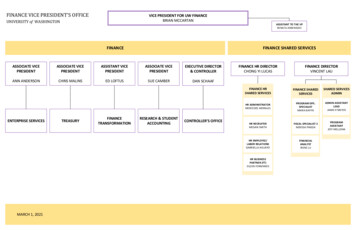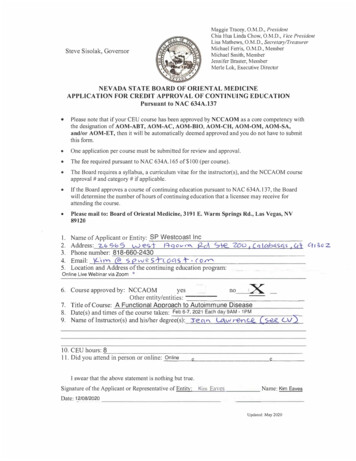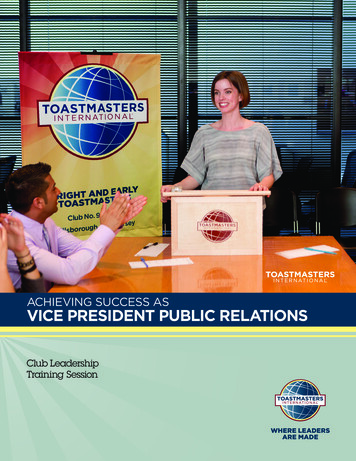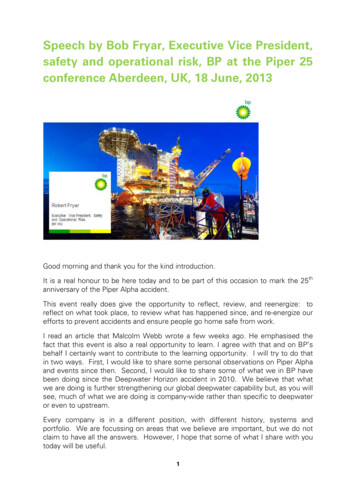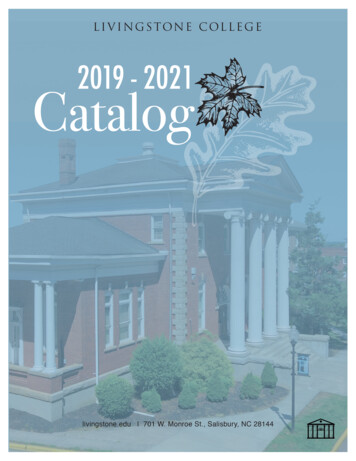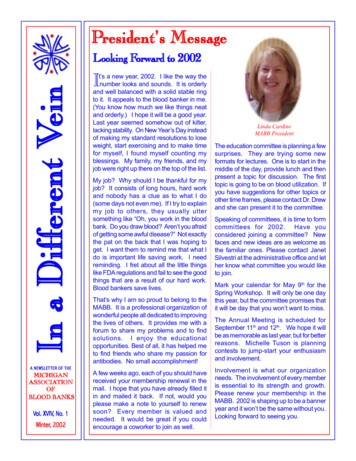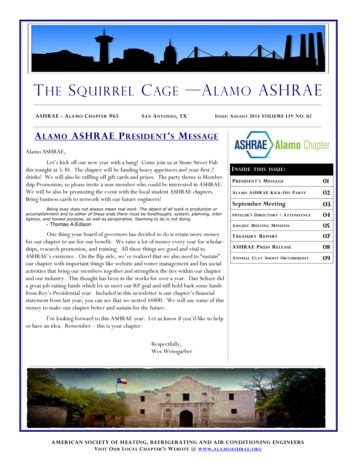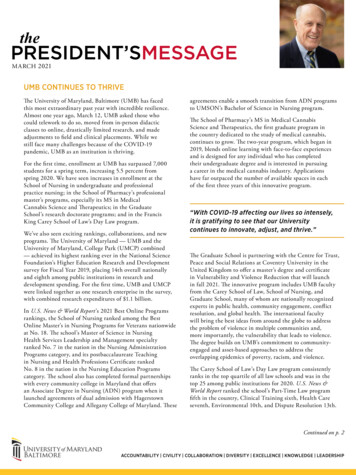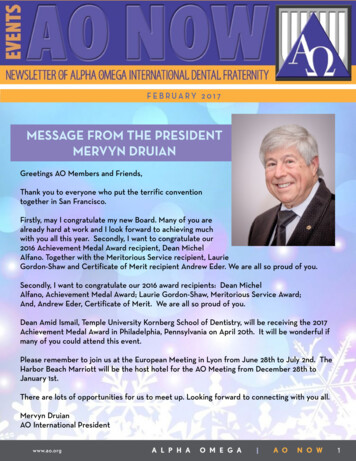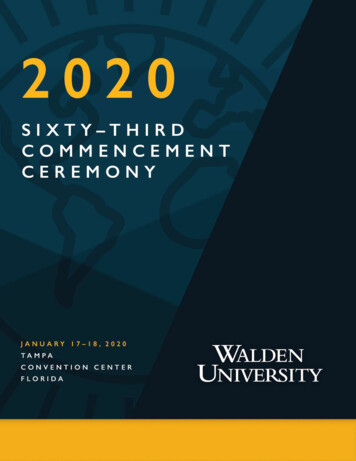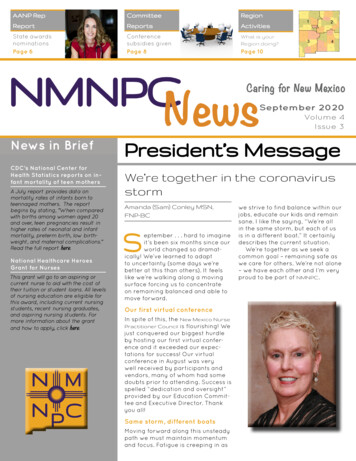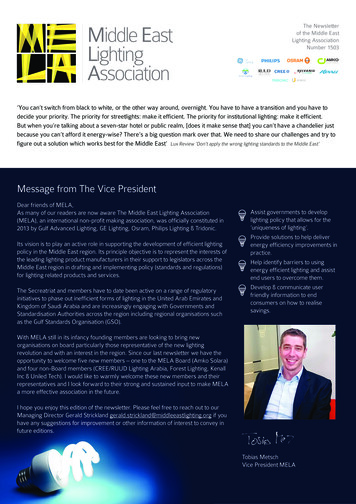
Transcription
The Newsletterof the Middle EastLighting AssociationNumber 1503‘You can’t switch from black to white, or the other way around, overnight. You have to have a transition and you have todecide your priority. The priority for streetlights: make it efficient. The priority for institutional lighting: make it efficient.But when you’re talking about a seven-star hotel or public realm, [does it make sense that] you can’t have a chandelier justbecause you can’t afford it energy-wise? There’s a big question mark over that. We need to share our challenges and try tofigure out a solution which works best for the Middle East’ Lux Review ‘Don’t apply the wrong lighting standards to the Middle East’Message from The Vice PresidentDear friends of MELA,As many of our readers are now aware The Middle East Lighting Association(MELA), an international non-profit making association, was officially constituted in2013 by Gulf Advanced Lighting, GE Lighting, Osram, Philips Lighting & Tridonic.Its vision is to play an active role in supporting the development of efficient lightingpolicy in the Middle East region. Its principle objective is to represent the interests ofthe leading lighting product manufacturers in their support to legislators across theMiddle East region in drafting and implementing policy (standards and regulations)for lighting related products and services.The Secreatriat and members have to date been active on a range of regulatoryinitiatives to phase out inefficient forms of lighting in the United Arab Emirates andKingdom of Saudi Arabia and are increasingly engaging with Governments andStandardisation Authorities across the region including regional organisations suchas the Gulf Standards Organisation (GSO).Assist governments to developlighting policy that allows for the‘uniqueness of lighting’.Provide solutions to help deliverenergy efficiency improvements inpractice.Help identify barriers to usingenergy efficient lighting and assistend users to overcome them.Develop & communicate userfriendly information to endconsumers on how to realisesavings.With MELA still in its infancy founding members are looking to bring neworganisations on board particularly those representative of the new lightingrevolution and with an interest in the region. Since our last newsletter we have theopportunity to welcome five new members – one to the MELA Board (Amko Solara)and four non-Board members (CREE/RUUD Lighting Arabia, Forest Lighting, KenallInc & Uniled Tech). I would like to warmly welcome these new members and theirrepresentatives and I look forward to their strong and sustained input to make MELAa more effective association in the future.I hope you enjoy this edition of the newsletter. Please feel free to reach out to ourManaging Director Gerald Strickland gerald.strickland@middleeastlighting.org if youhave any suggestions for improvement or other information of interest to convey infuture editions.Tobias MetschVice President MELA
The lighting landscapein the regionThe speed of change from conventional lighting components to energy efficient LED hasbeen faster than predicted as most countries in the region quickly adopt new lightingtechnologies for high profile projects.On the regulatory side concrete examples of the phase out of obsolete lightingtechnologies, both for consumer and commercial applications are in evidence in variousparts of the Middle East, where sustainability appears to be more of a concern more thanenergy costs.In general however MELA members see strong demand for lighting and controls asgovernments increase their spending on nation building infrastructure such as roads,schools, houses and hospitals. Add to this the growth in overall population in manycountries in the region and positive demand for more (especially) intelligent lightingsolutions can be seen.Gerald Strickland who leads the regulatory outreach on behalf of the MELA memberswith standardization/regulatory authorities in the region comments ‘Our members seegreat opportunities with LED lighting and controls to also grow sustainably, and despitethe disruptive phase the industry is in, they are committed to helping their customersand partners reduce their energy consumption and environmental impacts, whilst savingmoney.’Energy consumption in the Middle East is amongst the highest in the world and stillincreasing, leading to a higher carbon emissions per capita than world average. MELAmembers believe that part of the answer to addressing this challenge is to be found inintelligent lighting solutions that will allow cities, offices and individuals to both personalizetheir lighting solutions and save energy at the same time.In the region we have seen a huge increase in interest for intelligent lighting solutions fromoffice building owners, hotels and governments alike. This is a big change, but shows thatour customers now understand the impact of lighting in their energy footprint. Lightingconstitutes around 40% of a city’s energy consumption and buildings make up to 60% ofoverall lighting use, so there are quick wins to be made by switching to energy efficientintelligent lighting.The transformation to digitallight is a big step, so we arecommitted as the global leader inlighting to educate our partnersand customers on the newinnovations and its relevance totheir needs. MELA is part of thisoutreach process in that it allowsus as an industry to supportregulators interested in moving toefficient lighting solutions in timesthat are quite challenging. Ourmembers see great opportunitieswith LED lighting and controls togrow, and grow sustainably.’Lux Review ‘Manufacturers club togetherto promote ‘intelligent’ lighting in theMiddle East
BahrainLighting policynews from theregionUnited Arab EmiratesA sales ban on inefficient incandescent lamps that came intoeffect on 1 July 2014 has now formally entered into force as ofthe 1st January 2015. The regulation which is an initiative of theEmirates Authority for Standardisation and Metrology (ESMA)is expected to save the country 182 million ( 135 million) a yearon energy bills and the equivalent of 165,000 cars in carbonemissions. Other light sources and control gear for fluorescentlamps have been included in the regulation. MELA has recentlybeen invited to discuss policy initiatives aimed at regulatingcommercial lighting later this year. Developments in this regard willbe covered in our next newsletter.Following an exchange of views with the Bahrain Standards &Metrology Directorate (BSMD) the MELA Secretariat has thefollowing information to share regarding the draft regulation onRequirements for non-directional household lamps in the Kingdomof Bahrain. From a general point of view the current draft ofthe regulation includes aspects extracted from the EU lightingregulations to a differing extent: The LED functionality table from the EU regulation 1194 isincluded as is the Mercury content table for CFLi. Amendment of EC/244/2009 which is 859/2009 has now beenincluded by removing the UV requirements in the originalversion of the test. INCANDESCENT lamps will be phased out without anydefinition of the stages. BSDM have indicated that both clear and non-clearINCANDESCENT lamps will be phased out and that clearHALOGEN lamps will be legal, as long as these products meetthe efficacy requirement. Companies placing products on the market should also beaware that special purpose marking requirement is brieflymentioned in the scope, and specific requirements have beenelaborated within the articles of the regulation. From the point of view of conformity, suppliers to the marketneed to be aware that mercury limits are maximum values.As far as phase out timings are concerned, BSMD expects thatthe regulation will be effective by August 2015. Once enforced,all lamps within the scope of the regulation should satisfy thespecified requirements.The conformity assessment procedure for the regulated lightswill depend on test reports provided by an accredited laboratoryas a main component for compliance. Test reports or certificatestherefore have to be issued by a body accredited by a member ofthe ILAC/IAF.Saudi ArabiaThe Saudi Energy Efficiency Program has embarked on a series oflighting related policy initiatives. Part 1 aims to regulate lighting products (mainly light sources)commonly used in residential lighting applications. Thisregulation is in its final stages of drafting and the date of its entryin force is as yet unclear. Part 2 aimed at regulating the commercial lighting sector(traditional light sources and LED retrofits and control gear). System level requirements are likely to feature in the medium term A list of SASO standards can be accessed via the following arch.aspxMELA is currently in an advisory role to the Saudi EnergyEfficiency Program and continues to provide support throughoutthe drafting phase of the residential and commercial lightingregulations. A meeting between MELA and SASO will take placein March 2015.MELA has issued a positionpaper regarding the inclusionin the text of an exclusiverequirement for amalgamdosed lamps. This paper canbe found via the following linkon the MELA website.
JordanJordanian Decision on Technical Regulations on Ecodesign and Energy Labelling ofElectrical Products, Resolution No. 1, 2014. On-going issue with the 3rd party/ISO17025 test reports requested for safety andperformance. These requirements appear to be independent from the requirementsin the regulations published in 2014. For safety and performance JSMO has startedto accept only 3rd party safety reports and reports for performance claims should besupervised by a certified body if testing is in house. If this is not the case, 3rd partytesting is needed. The status of the implementing stages of the regulations is as follows:o Jordanian technical regulation # 2093/2013 (transposed from EU directive 245/2009)that will start phasing out inefficient domestic lamps including (incandescent, low efficiencyhalogen lamps) by 1st January 2016. The first two stages will be taken in one step. Stage 1 - date of entry into force 1st July 2014 (actually written 2013 in the regulation). Stage 2 – date of entry into force 13th April 2015. With Eco Design implementation there appears to be some confusion. See entry into forcedates above. Local customs claim that Eco Design requirements are mandatory. Energy efficiency label to be printed on all lighting products.Other newsA big welcome to MELA’s fivenewest members! In Februarythe MELA Board received andaccepted five applications formembership from the followingcompany’s active on the regionallighting scene.Board Memberwww.amkosolara.com/en/about.php(Michael Ng CEO)Non Board MemberQatarGulf-times.com recently reported that the Ministry of Environment is considering banningthe import of the tungsten lamps into the country and replacing it with energy saving LEDlamps. Arrayah daily quoted the ministry’s Assistant Under Secretary of the Laboratoriesand Standardisation Affairs Mohamed Saif al-Kuwari. Al-Kuwari as saying ‘ .the decisionto ban tungsten lamps is being made as they are found to be at least 30% more energyconsuming and studies have found the lamps are making enormous amounts of thermalemissions which contribute to harm the environment.’ The official said the ministry hascompleted the procedures for adopting Qatar standards and specifications for the modernlighting systems that would help conserve the environment and save energy. Suchdecisions are within the framework of the implementation of the standards of sustainabilityand new Qatar construction code. The Qatar construction code, said al-Kuwari, ‘adoptsstandard specifications in respect of energy consumption in all buildings in order toconserve human safety, support sustainable development and national economy.’GSOThe Gulf Standards Organisation has recently published a Low Voltage TechnicalRegulation. To confirm the scope of the GSO Low Voltage Technical Regulation pleaseuse the link below: 004-01-20141028-bd-v2ab-en.pdf This Technical Regulation shall apply to electrical equipment hereinbefore referred to aselectrical equipment in Article (1). Electrical equipment: means all electrical and electronicdevices and appliances and fixtures that contain electrical and/or electronic componentsdesigned for use with a voltage rating of between 50 and 1000 V for alternating currentand between 75 and 1500 V for direct current, other than the electrical equipment andphenomena listed in Annex (2). Lighting products will fall under the scope of the LV TR however the current phase ofimplementation will not cover the lighting products. LVTR Article (20) determine two lists for two categories of electrical equipment that theLVTR will be implemented for. Please note that List (1) and List (2) will be periodicallyreviewed, updated and re-issued, providing sufficient time for implementation.www.kenall.com/Kenall.htm(Greg Mueller CEO)www.UniversalLightingGroup.com/Uniledtech (Kirti Desai, MD)www.forestlighting.com(Lawrence Lin MD)www.creecanada.com/ &www.cree.com/Lighting(Vic Andrews MD)
The Powerof One Light:The IndustrialInternet and LightingTo get a sense of the power of the Industrial Internet, considerwhat GE calls the power of 1%. The Industrial Internet will touchon countless sectors and sub-sectors of the economy and thedevices that power those sectors, from industrial machinery tosmart phones, sensors and controls. If we extrapolate merely 1%efficiency or productivity improvements from a huge installedbase of technologies with countless, perhaps exponential, setsof touch points or nodes within the modern economy – everymachine, every smart phone, every movement sensor, everycontrol device, etc etc – we start to get a sense of the power of1%. Lighting, within this epic tale of the Indu
and four non-Board members (CREE/RUUD Lighting Arabia, Forest Lighting, Kenall Inc & Uniled Tech). I would like to warmly welcome these new members and their representatives and I look forward to their strong and sustained input to make MELA a more effective association in the future. I hope you enjoy this edition of the newsletter. Please feel free to reach out to our Managing Director Gerald .
